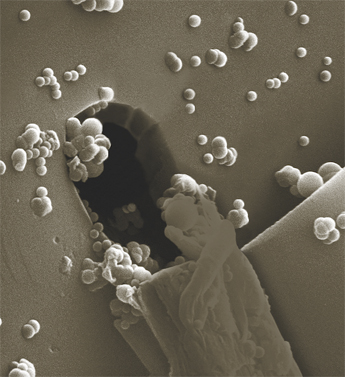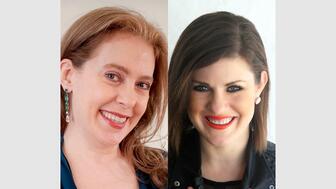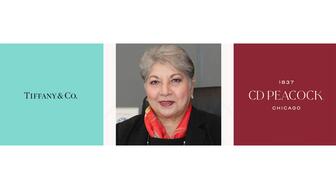The luxury goods company said founder Ippolita Rostagno will remain at the brand’s helm.
Gübelin Gem Lab Debuts ‘Emerald Paternity Test’
The new technology introduced at Baselworld can trace an emerald to the mine of its origin.

Introduced at Baselworld 2017, Gübelin’s “Emerald Paternity Test” involves applying DNA-based nanoparticles directly onto rough emerald crystals at mining sites.
Nanotechnology deals with particles less than 100 nanometers large. The particles aren't visible to the naked eye or even under an optical microscope, so a stone’s properties and grading won’t be affected by the application.
Gübelin’s application process is designed to withstand all steps of an emerald’s journey, from cutting to cleaning, polishing, transporting and setting, so that the nanoparticles will act as a permanent origin tag.
Just like a human's DNA is specific to each individual, the tag will be unique to each mine.

“This technology offers all stakeholders along the entire supply chain, from the miner to the final customers, proof of the exact source of emeralds, instilling confidence and creating trust,” said Daniel Nyfeler, managing director of Gübelin Gem Lab. “It enables a new level of transparency for the gemstone trade.”
Gübelin worked with Gemfields, majority owner of the world’s largest emerald mine, the Kagem Mine in Zambia, to test the new technology.
“Partnering with Gemfields for the feasibility study was an obvious choice,” Nyfeler said, “as it is not only an industry leader, but a forward-thinking company, and hence a perfect partner to test a ground-breaking idea such as this paternity test for emeralds.”
The results were a success and Gemfields told National Jeweler it would "continue to tag emerald production coming through the auction system."
Gemfields CEO Ian Harebottle explained, “Embracing innovation, technology and increased transparency is at the heart of our approach. We were therefore thrilled to assist Gübelin in the testing of this new technology, and we are very excited about the outcome as it offers a multitude of benefits to the industry and the consumer.”
For now, the paternity test will only work for emeralds, as the DNA-based nanoparticles are able to adhere to the fissures unique to the gemstone, and remain there through all processing.
Gübelin, which analyzes diamonds, color gemstones and pearls at its laboratories in Lucerne, Switzerland, Hong Kong and New York, said that the nanotechnology could offer transparency across the industry, to large and small mining companies, governments, trade organizations, industry watchdogs, jewelry brands and customers.
Gübelin is "looking to develop relationships with all stakeholders in the supply chain," they said to National Jeweler.
The Latest

Laura Burdese, who joined the Italian luxury brand in 2022, will take on the role in July.

The National Jeweler editors revisit the most noteworthy industry happenings and design trends from 2025.

How Jewelers of America’s 20 Under 40 are leading to ensure a brighter future for the jewelry industry.

Need a gift for the cat lover who has everything? Look no further than our latest Piece of the Week.


It purchased the “Grosse Pièce,” an ultra-complicated Audemars Piguet pocket watch from the ‘20s, for a record-breaking price at Sotheby’s.

The lab-grown diamond grower now offers custom engagement and fashion jewelry through its Kira Custom Lab Jewelry service.

Roseco’s 704-page catalog showcases new lab-grown diamonds, findings, tools & more—available in print or interactive digital editions.

Chandler got his start at Michelson Jewelers and has served as DCA president and CEO since 2001. He will retire at the end of the month.

The boutique is slated to open this week inside Terminal 8, offering pre-owned Rolex watches and more to international travelers.

Sponsored by Digital Monitoring Products

The special-edition egg pendant ingested in a New Zealand jewelry store was recovered after a six-day wait.

Associate Editor Natalie Francisco plays favorites with Piece of the Week, selecting a standout piece of jewelry from each month of 2025.

The “Love and Desire” campaign is inspired by the magic that follows when one’s heart leads the way, said the brand.

Berta de Pablos-Barbier will replace Alexander Lacik at the start of January, two months earlier than expected.

Sotheby’s held its first two jewelry sales at the Breuer building last week, and they totaled nearly $44 million.

Winners will receive free registration and lodging for its fourth annual event in Detroit.

Here are six ideas for making more engaging content for Instagram Reels and TikTok, courtesy of Duvall O’Steen and Jen Cullen Williams.

The honorees include a notable jewelry brand, an industry veteran, and an independent retailer.

Carlos Jose Hernandez and Joshua Zuazo were sentenced to life without the possibility of parole in the 2024 murder of Hussein “Sam” Murray.

Yood will serve alongside Eduard Stefanescu, the sustainability manager for C.Hafner, a precious metals refiner in Germany.

The New Orleans jeweler is also hosting pop-up jewelry boutiques in New York City and Dallas.

Set in a Tiffany & Co. necklace, it sold for $4.2 million, the highest price and price per carat paid for a Paraíba tourmaline at auction.

The jeweler’s “Deep Freeze” display showcases its iconic jewelry designs frozen in a vintage icebox.

Take luxury gifting to new heights this holiday season with the jeweler’s showstopping 12-carat sphene ring.

This year's theme is “Unveiling the Depths of the Ocean.”

In its annual report, Pinterest noted an increase in searches for brooches, heirloom jewelry, and ‘80s luxury.


























